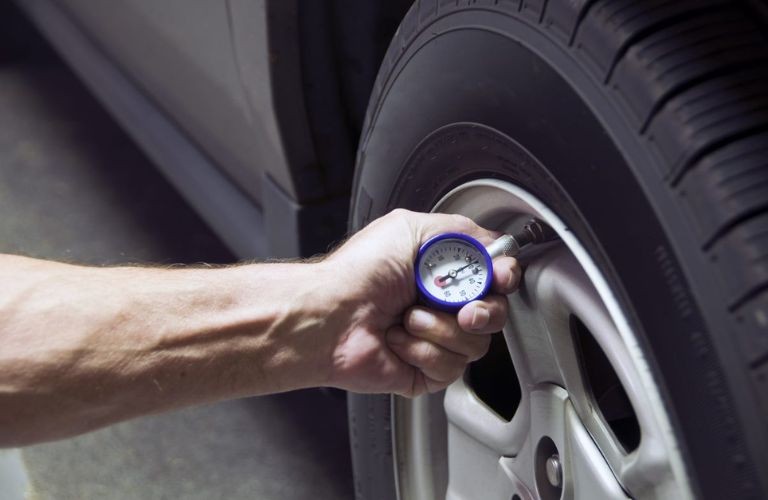The tire pressure warning light in your Mercedes-Benz is a crucial safety feature. It alerts you to low tire pressure, a condition that can impact handling, fuel efficiency, and tire lifespan. This article provides a comprehensive guide to understanding and resetting the Mercedes Tire Pressure Warning, ensuring a safe and optimal driving experience.
Maintaining correct tire pressure is essential for safe and efficient driving. Underinflated tires can lead to poor handling, increased braking distance, reduced fuel economy, and premature tire wear. Overinflated tires can result in a harsh ride, decreased traction, and increased risk of blowouts. That’s why your Mercedes-Benz is equipped with a Tire Pressure Monitoring System (TPMS) designed to alert you when tire pressure falls outside the recommended range.
What Does the Mercedes Tire Pressure Warning Light Mean?
A continuously illuminated tire pressure warning light indicates that one or more tires are significantly underinflated. You should address this immediately by checking and inflating your tires to the recommended pressure. Consult your owner’s manual or the sticker on the driver’s side doorjamb for the correct pressure for your specific model.
A flashing tire pressure warning light signals a malfunction within the TPMS itself. This could indicate a problem with a sensor, the control module, or the system’s wiring. In this case, professional diagnosis and repair are necessary. Don’t delay, as a faulty TPMS cannot provide accurate tire pressure readings.
How to Reset the Mercedes Tire Pressure Warning Light
After inflating your tires to the correct pressure, you’ll need to reset the TPMS. The reset procedure varies slightly depending on the model and year of your Mercedes-Benz. Here’s a general guide:
Using the Instrument Cluster Menu:
- Turn on the ignition: Start your vehicle but do not put it in gear.
- Navigate to the Service Menu: Use the steering wheel controls to navigate through the instrument cluster menu until you find the “Service” or “Vehicle” option.
- Select Tire Pressure: Choose the “Tire Pressure” or “TPMS” option within the Service menu.
- Initiate the Reset: Select “Run Flat Indicator” or “Reset.” You may need to confirm the reset. The system will then begin monitoring the tire pressures.
Using the Center Console Controls:
- Turn on the ignition: Start your vehicle but do not put it in gear.
- Access the Vehicle Settings: Use the COMAND system controller to navigate to the vehicle settings menu.
- Find the TPMS Settings: Look for the “Tire Pressure” or “TPMS” option.
- Reset the System: Select the “Reset” option and confirm. The system will start monitoring tire pressures again.
 Mechanic checking tire pressure
Mechanic checking tire pressure
Best Practices for Tire Maintenance
- Regularly check tire pressure: At least once a month, and before long trips, check your tire pressure using a reliable gauge.
- Inspect tires for damage: Look for cuts, bulges, or uneven wear. Address any issues promptly.
- Consider temperature fluctuations: Tire pressure changes with temperature. Adjust pressure as needed, especially during extreme weather.
- Rotate tires: Regular tire rotation promotes even wear and extends tire life. Consult your owner’s manual for the recommended rotation schedule.
When to Seek Professional Help
If you’ve inflated your tires correctly and followed the reset procedure, but the warning light persists, or if the light is flashing, it’s crucial to seek professional assistance. A qualified technician can diagnose and repair any issues with your TPMS, ensuring your safety on the road. Ignoring a TPMS warning can lead to dangerous driving conditions and costly repairs. Addressing the issue promptly is always the best course of action.
